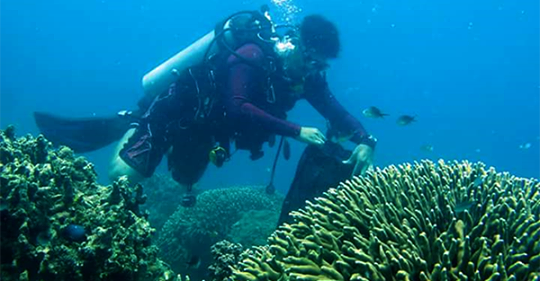Underwater cleanup in Nogas Island
- TBN News

- Oct 1, 2018
- 2 min read

A GROUP of Iloilo-based scuba divers volunteered to the underwater cleanup in Nogas Island, Anini-y, Antique last September 21-22, 2018.
Five buddy teams were deployed around the island to clear the coastal areas, while ten divers led the underwater cleanup.
In a span of six months, two cleanup drives will be conducted every month in the island.
According to one of the divers, Karlo Agao, their goal is to have cleaner reefs in Nogas Island.
“Nogas Island is a tourist destination and we want cleaner reefs for the island. Ginakuha namon ang mga abandoned fishing nets, fishing lines nga nga salab-it sa corals,” said Agao who is also a Dive Instructor.

During the cleanup drive, divers were able to collect around eight plastic bags of garbage. Most wastes were shampoo sachets, straws, and plastic bottle, Agao said.
Aside from targeting the coastal and underwater trash, the clean-up drive was also conducted to control the overpopulation of the “crown of thorns” starfish in the island.
Agao emphasized that the “crown of thorns” starfish is a worldwide problem.
“Worldwide problem na siya subong ang pag control sang overpopulation sang crown of thorns, everybody is doing the same,” Agao noted.
The Acanthaster planci or the “crown of thorns” starfish are voracious predators that can wipe out large areas of coral reef. One individual species can consume up to six square meters of living reef per year according to World Wildlife Fund.

Recently, the Great Barrier Reef in Australia, one of the world’s largest marine structures was also reportedly to be threatened by the same species of starfish.
If not controlled, the “crown of thorns” can spread and kill an entire reef system.
The clean-up drive was organized by Jollibee N.I.C.E (Nogas Island Care for the Environment) in cooperation with Department of Environmental and Natural Resources (DENR) Antique, Municipality of Anini-y, Municipal Environmental and Resources Office Anini-y, Antique Provincial Tourism Office, and Local Government Units (LGUs) in Antique.
SOURCE: The Daily Guardian
Special thanks to:






Comments